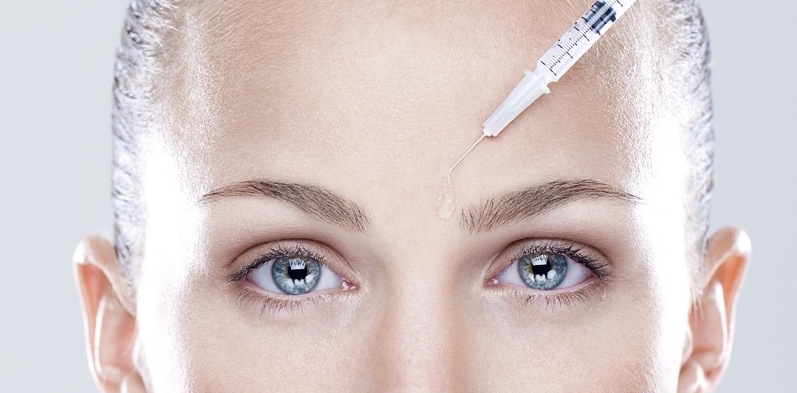Botox

Learn how Botox softens facial lines, prevents wrinkles, and restores a refreshed, youthful look with safe, expert-administered injections.
Over time, facial expressions such as smiling, frowning, and squinting cause the appearance of fine lines and wrinkles. Among all non-surgical treatments developed to soften these dynamic lines, Botox remains the gold standard. Trusted for decades by millions worldwide, Botox injections provide a safe, effective, and quick solution to achieve a smoother, more youthful appearance.
What Is Botox?
Botox is the trade name for botulinum toxin type A—a purified protein that temporarily relaxes overactive facial muscles. When injected in controlled micro-doses, Botox works by blocking the nerve signals that trigger muscle contractions, allowing the overlying skin to relax and wrinkles to fade. It is widely used to treat forehead lines, frown lines between the eyebrows (glabellar lines), crow’s feet around the eyes, and neck bands caused by repetitive muscle movements. Beyond aesthetics, Botox also has various therapeutic applications in medicine.
How Is Botox Applied?
Botox injections are performed using very fine needles that deliver minimal discomfort. Before treatment, the skin is cleansed, and a topical anesthetic cream may be applied to enhance comfort. The physician strategically injects small amounts of the formula directly into specific facial muscles. The entire procedure usually takes 10–15 minutes, and patients can immediately return to their daily routine without downtime. Results begin to appear within 3–5 days and reach their peak effect in about two weeks.
How Botox Works on Facial Muscles
Each facial expression involves a complex interplay between nerves and muscles. Botox interrupts this communication by temporarily blocking the release of acetylcholine—a neurotransmitter responsible for muscle contraction. When the muscles relax, the overlying skin appears smoother, and existing wrinkles become less visible. Regular treatments help prevent the deepening of expression lines over time, providing a refreshed and rested look.
Areas Commonly Treated with Botox
The most frequently treated areas include horizontal forehead lines, frown lines between the eyebrows, crow’s feet, and the platysma bands on the neck. Botox is also used for gummy smiles, chin dimpling, and downward-turning mouth corners. Beyond cosmetic indications, it effectively treats excessive sweating (hyperhidrosis) on the underarms, palms, and soles, as well as medical conditions such as migraine and muscle spasms.
What to Expect After the Procedure
After a Botox session, slight redness or pinpoint swelling at the injection sites may occur but usually resolves within minutes. Patients are advised to avoid lying down, rubbing the treated area, or engaging in strenuous activity for the first few hours. Makeup may be applied after 24 hours. The skin begins to look smoother and more relaxed within a few days, with results lasting approximately 4–6 months.
Longevity and Maintenance
The duration of Botox results depends on individual metabolism, treated areas, and dosage. With repeated sessions, many patients notice that the effects last longer because the targeted muscles become conditioned to reduced movement. Typically, two to three sessions per year are sufficient to maintain a youthful and natural appearance. Complementary skincare and collagen-stimulating treatments can enhance and prolong the benefits.
Safety and Side Effects
Botox has one of the longest and most well-documented safety profiles in aesthetic medicine. Side effects are rare and temporary, such as minor bruising, mild headache, or slight asymmetry, which resolves as the product settles. Choosing an experienced medical aesthetic specialist who understands facial anatomy ensures both safety and natural results. Millions of successful treatments worldwide attest to its reliability.
Combination Treatments
Botox can be safely combined with dermal fillers, skin-tightening procedures like Thermage or Ultherapy, and energy-based devices such as Sofwave or Emface. While Botox relaxes dynamic lines, fillers restore lost volume and lift facial contours. Together, these treatments form a comprehensive anti-aging strategy tailored to individual needs for balanced, harmonious results.
Who Is a Good Candidate for Botox?
Anyone aged 18 to 70 who wishes to reduce facial wrinkles caused by muscle movement can benefit from Botox. It is ideal for patients noticing early lines as a preventive measure or for those seeking to soften existing wrinkles. Individuals with neuromuscular disorders, active skin infections, or pregnancy should consult their physician before undergoing treatment.
| Procedure Time | 10–15 minutes |
|---|---|
| Onset of Effect | 3–5 days (full effect in 10–14 days) |
| Duration of Results | 4–6 months |
| Recommended Frequency | 2–3 sessions per year |
| Downtime | None |
| Treated Areas | Forehead, crow’s feet, frown lines, neck bands, underarms |
Botox Prices
According to current medical regulations, prices for Botox treatments cannot be listed online. For personalized information regarding Botox prices, dosage, and treatment plans, please contact our clinic directly. Our expert team will be happy to provide guidance based on your individual needs and treatment goals.
In conclusion, Botox remains one of the most effective, versatile, and scientifically supported methods to reverse visible signs of aging caused by facial expressions. When administered by an experienced medical aesthetic physician, it offers natural, rejuvenating, and confidence-boosting results with minimal discomfort and no downtime.
Botox Frequently Asked Questions
Question:
When will I see results after Botox?
Results start appearing within 3–5 days and reach their full effect within about two weeks.
Question:
Will Botox make my face look expressionless?
When performed by an experienced specialist, Botox simply relaxes targeted muscles—your natural facial expressions remain intact.
Question:
Can I combine Botox with dermal fillers?
Yes. Combining Botox with fillers enhances facial rejuvenation by addressing both muscle-related wrinkles and volume loss.
Question:
How often should I repeat the treatment?
Most patients benefit from repeating the procedure every 4–6 months to maintain optimal, natural-looking results.
